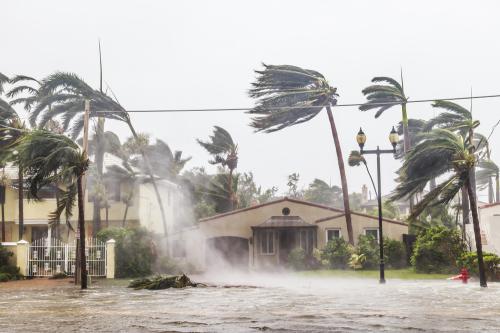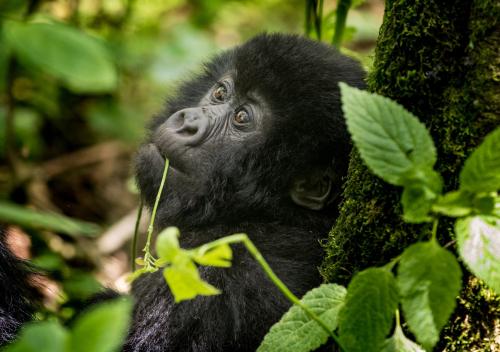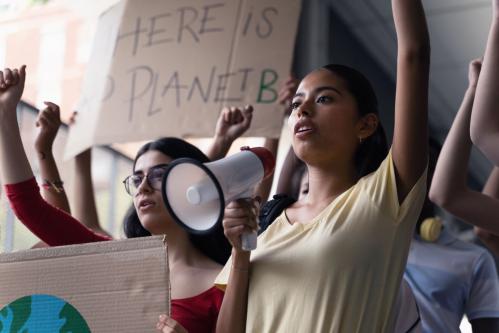When Melville wrote in Moby-Dick, “There is, one knows not what sweet mystery about this sea, whose gently awful stirrings seems to speak of some hidden soul beneath,” he was onto something. We still imagine the high seas as a place beyond limits, thick with undiscovered and exotic life below the surface—and if not souls, at least fish. Indeed, the sea is full of stuff and mystery.
However, this abundance does not mean we should act like there’s so much that we will never run out. We will, and we have already for some species. The Atlantic bluefin tuna is one, whose international protection the United States and others sought last year and failed to secure, largely because of Japan and demand for the tuna’s raw flesh. The Patagonian toothfish (i.e. Chilean Sea Bass) is another fish that’s working its way down the culinary food chain, and there are more going in that direction. Sharks are taking it in the fin, big time.
Moving forward, three key steps can turn this around. First, we need more places permanently closed to fishing. “Marine protected areas” – the parks and refuges of the sea – have added a key tool for conservation, with research showing that depleted populations often rebound within them and produce fish for harvest outside their boundaries. The United States and Britain are among international leaders in developing these sites, ranging from the arctic to tropics and from coral reefs to deep, open sea. One such marine protected area is the 89 million acre Papahānaumokuākea Marine National Monument in the Northwest Hawaiian Islands, which is the largest nature reserve in the United States, and a happy place for fish and wildlife.
Second, in places where fishing is allowed, tradable amount-specific “catch shares” should be allocated to each fisherman within overall quotas that provide for sustainable and healthy populations. This doesn’t solve the questions of how much total catch should be permitted or how much each fisherman’s share of the catch should be. But once in place, catch shares prevent fishing “derbies,” where boats race against each other to catch all they can before the area’s total quota is reached. Making the shares tradable allows those who want to catch less and those who want to catch more to help each other. The approach also creates an incentive for restraint — fishermen will take less now if they know it will mean higher yields in the future. This has worked for less mobile creatures like oysters, where a fisherman can be given his own patch to tend. But it can work with fish too, so long as the fishermen talk to each other.
Third, we need to shift the burden of proof in determining how much catch is acceptable. The time-honored approach has been for regulators to determine a number and then defend it against critics who want to take more. After the dust of debate has settled, over-exploitation occurs. Yet fishing in some geographically designated areas, such as national wildlife refuges in the United States, is presumed closed unless users or managers can demonstrate that the catch will be compatible with conservation, and conservation is usually the result. Shifting the burden of proof this way would transform fishing policy for the better. An international group of scientists organized by the International Union for Conservation of Nature (IUCN) and others discussed fishing burden of proof at an Oxford workshop in April 2011. Their report recommends that the United Nations Security Council and General Assembly establish a “Global Ocean Compliance Commission” with powers to regulate high seas fishing and put the burden of proof on those seeking harvest. The proposed agency is not a realistic expectation at this time. There would almost certainly be more than one veto from permanent members of the UN Security Council, in the unlikely event that such a proposal came up for a vote. The United States has not even been able to muster Senate consent to ratification of the Law of the Sea Convention, despite long-standing, bipartisan endorsement by the Executive Branch. But shifting the burden of proof is the path forward for sustainable fishing, and the nations that now participate in an array of fishing agreements need to implement the change by amending the programs and policies in which they are engaged.
Frankly, it’s high-seas time to start fishing with a sense of place and ownership, as a farmer or forester might have for her land, or a gardener for his plot. We need to think of this differently than we have in the past — we’ve been hunters in the sea long enough.
The Brookings Institution is committed to quality, independence, and impact.
We are supported by a diverse array of funders. In line with our values and policies, each Brookings publication represents the sole views of its author(s).



Commentary
Op-edKeeping Sea Life
July 20, 2011